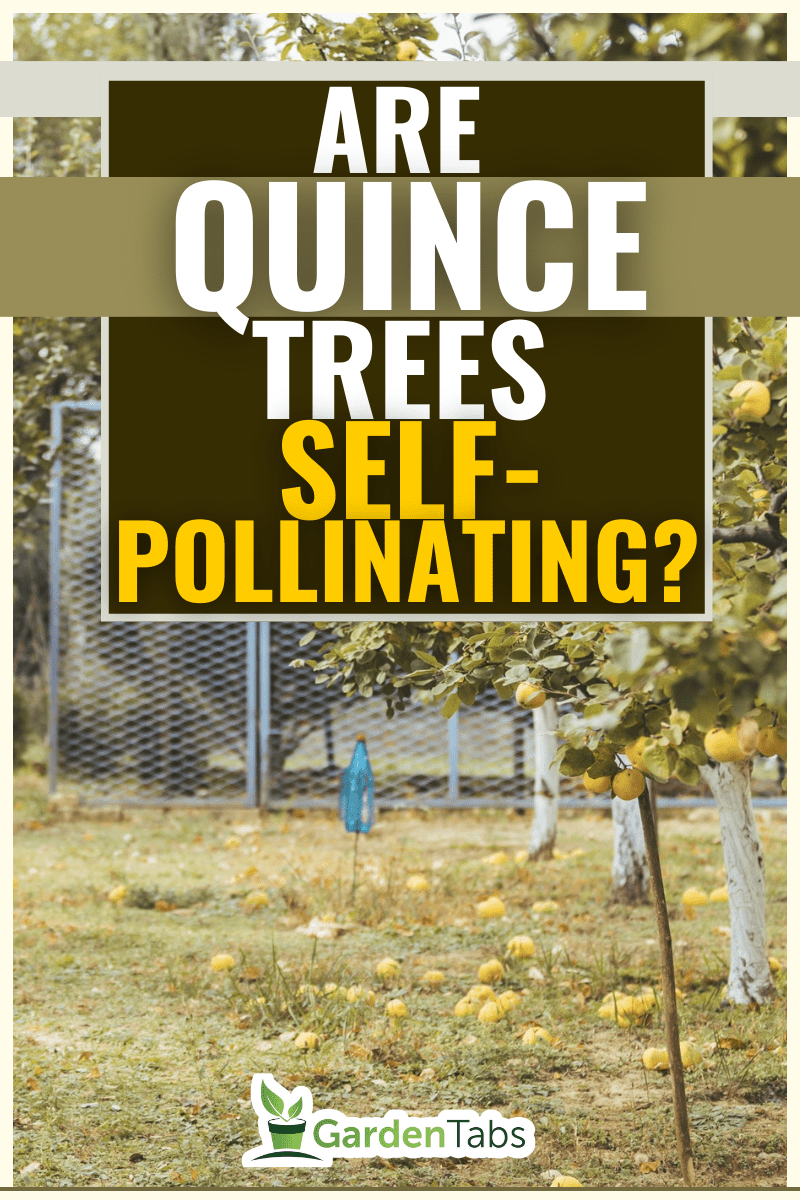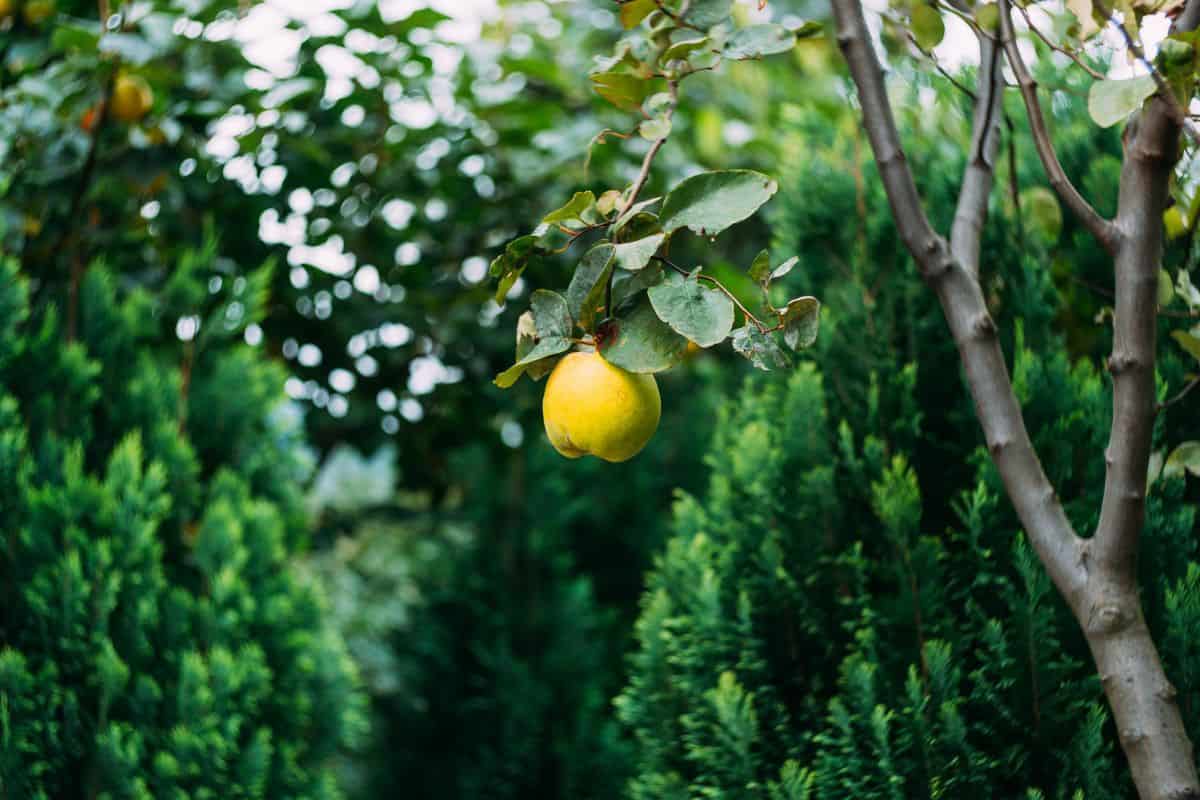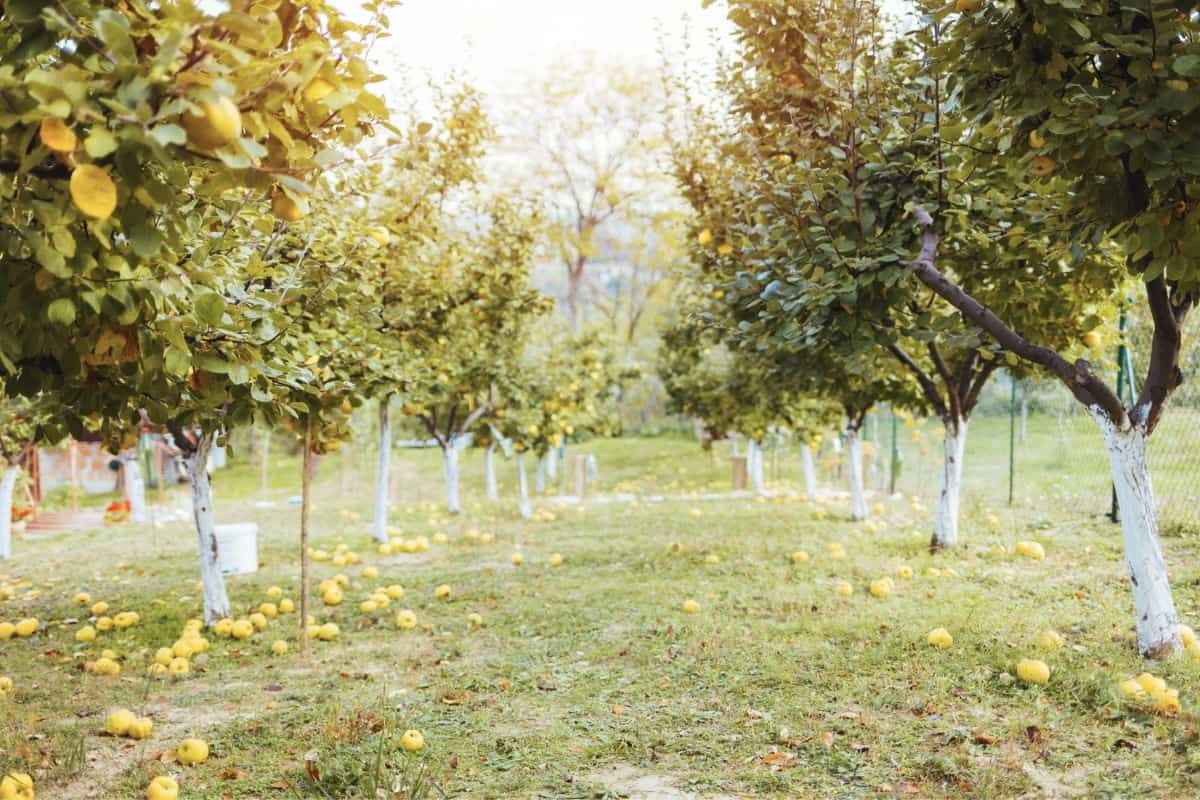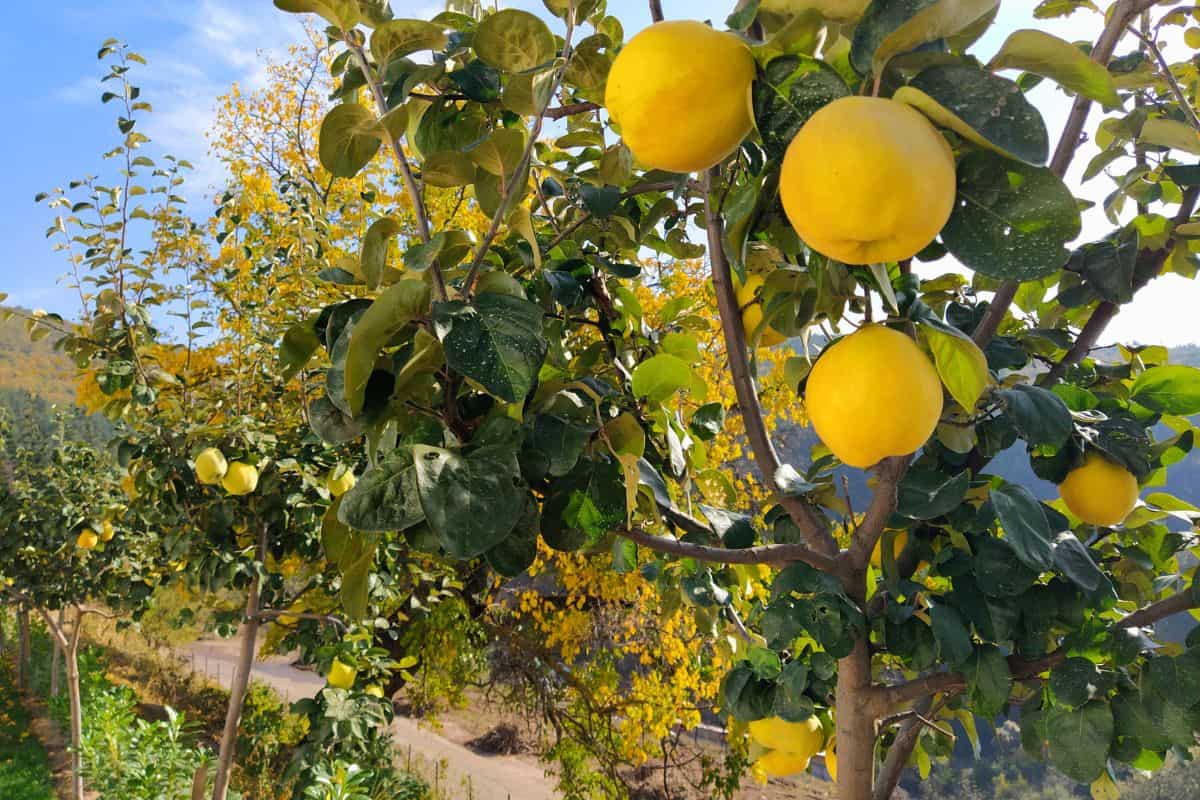Choosing the perfect plant for your landscape isn't always as easy as it seems. For example, do you want to find a self-pollinating tree species for your garden, and the quince tree comes to mind? Are these beautiful fruit trees able to pollinate on their own?
Luckily, we've done plenty of searching and have the answer below!
Yes, a quince tree will be self-pollinating. These fruit-bearing trees can be grown alone and still produce golden-yellow pome fruit. Although most fruiting trees require a partner plant to make their fruit, the quince is very independent.
Another benefit of this tree species is that it ramps up fruit production until year 10, hitting its prime. From there, a quince tree should continue fruiting until it dies.
As we start this article, we will cover all things growing quince trees and discuss if they're self-pollinating. Whether you are curious about this small tree, have a quince in your garden, or need other help, we've got your back. With that said, let's dive right into this article below!

Will A Quince Tree Pollinate On Its Own?

Yes! Quince trees are self-fertile, meaning they can pollinate themselves. Because of this, your tree doesn't need a partner tree beside it to encourage fruit growth as it matures.
However, having a partner plant near your quince tree can be beneficial. Planting another quince tree near yours will encourage both of them to fruit faster, meaning you can enjoy their harvest sooner.
According to Raintree Nursery, having a second or even third quince tree beside yours will encourage larger, more frequent fruit.
This will make each harvest higher quality, but it doesn't need to be that way for fruiting. Quince trees, although on the smaller side, are incredibly versatile and don't need much to get growing and fruit making.
It's also worth mentioning that growing a quince tree large enough for fruit production takes time. Therefore, having your quince tree be fruitless for the first few years of its life isn't unusual. Patience is crucial with this specific tree variety.
How Long Before My Quince Tree Produces Fruit?
Generally, you can expect a quince tree to produce fruit within five years of planting. Especially if your tree is alone in your garden, it can take time before it is strong enough to yield a harvest.
According to experts, quince trees grown from cuttings will produce fruit sooner than seed-grown trees, usually bearing fruit for around two or three years.
So, if someone prefers to have their tree bear fruit within the first couple of years of planting, we'd recommend going with a pre-grown cutting versus by seed.
Usually, having a tree that is partially grown before planting it in your garden will help with fruit production. It takes plenty of energy for a tree to develop its own fruit, so this process will not happen overnight.
As mentioned above, planting a partner tree near your quince can also help speed up fruiting. Even though your tree is self-pollinating, that doesn't mean an extra boost is a negative thing.
It's also worth noting that once these trees begin producing fruit, they typically do it for many years to come. One garden pro claims that many quince trees outlive their owners and continue fruit production.
What Type Of Fruit Does A Quince Tree Make?
For those wondering the type of fruit a quince tree makes, this is a yellow pome fruit. Your quince tree should produce a hard, fragrant, bright golden-yellow pome fruit around years 3-4, often resembling a pear.
Ripe quince fruits tend to be tart and will be hard to the touch. That can confuse gardeners, as ripe fruit typically softens, so that is something to keep in mind.
On top of their unique outer appearance and texture, eating a quince fruit straight off the tree is not common. Instead, most harvesters will use the quince fruit to make marmalade, jam, paste (quince cheese), or alcoholic beverages.
Quince trees are a bit quirky in their fruit-bearing, so this isn't a super popular tree for eating. Most gardeners choose quince trees for their manageable size and aesthetically pleasing look, so they're more decorative than harvest-worthy.
However, that's not to say you can't use your quince fruit to craft a delicious cocktail or marmalade. After such a long wait for fruiting, most people will be excited to see the bright yellow fruits form on their tree.
What Month Do Quince Trees Make Fruit?
You can usually expect a quince tree to have ripe fruit by October or November. This tree species is autumn-leaning, meaning yours will thrive during that period.
Furthermore, once your quince fruit turns golden yellow and smells strong, it is ready for harvesting. As we covered, the fruit from your tree will have a strong smell, reaching its peak during the later fall.
On top of that, most people wait until early November to remove the quince fruit from their tree, move it indoors, or send it off to be made into marmalade, jam, etc.
It's not too common to have quince trees bear ready-to-eat fruit, so you'll want to use the pome fruit for something besides raw eating.
Unlike a pear or apple, eating quince fruit raw can be too sour and hard for people, so this isn't something we'd recommend doing. Again, everyone has different taste buds, but the quince fruit is better processed than unprocessed.
What If My Quince Tree Never Produces Fruit?

If you notice your quince tree doesn't ever produce fruit, you want to see how mature it looks. Generally, this process will take 3-4 years if you plant your quince by seed.
However, trees in less-than-ideal climates can take a few extra years to be ready for fruit production. Sometimes, these plants can't garner the strength to produce a harvestable fruit because of their growing conditions.
An unhealthy quince tree won't be strong enough to make fruit, so this could be a lack of care for your tree. According to gardeners, it's possible to see a quince tree take 5-6 years or longer to bear fruit if it isn't strong enough.
It's also crucial that your quince tree receives enough water. Underwatered quince trees tend to drop their fruit before it ripens and develops, leading to a less-than-stellar harvest.
Again, this can occur for countless reasons, but the most typical is a tree that hasn't matured enough to handle fruit production and harvest. Give your quince some time, and make sure it's in the sun and well-watered!
Do Quince Trees Grow Fast?
Most often, a quince tree will grow at a moderate pace. As mentioned, these trees take a few years to be big enough for fruit production, so gardeners with them have a waiting period.
However, many quince trees will be large enough to bear fruit after 3 years. From there, year 10 is when your tree will be at its maximum fruit production, ultimately slowing down after that prime.
One of the benefits of growing a quince tree is that they are pretty easy to manage. Therefore, with sunlight and watering, your quince tree should grow a foot or more each year.
If you have a smaller quince tree or prune yours, it could stay around 6 feet, so these are more manageable fruit-bearing plants.
Again, you can also routinely fertilize quince trees to boost their growth speed and fruiting, so there are ways to speed up this timeline.
If you'd like to fertilize your quince, we recommend doing this in the early spring using a balanced formula.
How Long Does It Take A Quince Tree To Reach Mature Size?

You can typically expect a quince tree to reach mature size within a decade. Since the 10-year mark is when your quince tree's fruit production will be at its best, you may have to wait that long for it to reach its final size.
In addition, quince trees can grow anywhere from 12 to 16 feet if you leave them alone, meaning these aren't always smaller, ornamental trees.
If you let your tree grow wild, it can reach 15+ feet in its first 10-15 years. Of course, climate also plays a significant role here, as quince trees respond better to moderate year-round weather.
Although this tree species is hardy, it does best in warm, sunny, and sheltered locations. Therefore, trying to grow one in extreme cold or heat can stunt its growth and cause the fruiting process to take longer.
Less is more for quince trees, so try and give one a moderate climate and not too much attention. Moderation is key with this fruit-bearing species.
How Long Does A Quince Tree Produce Fruit?

Although this varies by the tree, a quince generally produces fruit until it dies. Since this tree species takes 3-4 years to make its first harvestable fruit, gardeners can expect the later years to be most productive.
Generally, quince trees reach their prime fruit production around 10 years old, slowing down into their 20s. Therefore, yours may live around 25 or so years, making fruit for about the same time.
On top of that, a quince tree may live 50+ years in ideal conditions, with on-and-off fruiting until it dies.
To Finish It Up
Whether you have a quince tree or want to grow one, knowing how it makes fruit is always good. This tree species is self-pollinating, meaning it doesn't need a partner tree.
However, it can help speed up the fruiting process to have multiple quince trees near each other. Even self-fertile trees can use the extra encouragement from nearby plants.
Furthermore, quince trees take around 3-5 years to bear fruit, although this can be upwards of 6 years, depending on the growth rate of your tree.
And while we have you with us, check out these helpful articles below!
Fruit Trees As Privacy Fence – How To?
